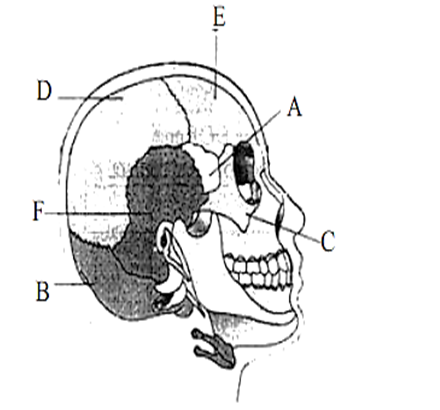 Multiple Choice Questions
Multiple Choice QuestionsThe sliding filament theory of muscle contraction was proposed by
A.F. Huxley and A.P. Pullman
A.F. Huxley and H.E. Huxley
B. Pullman and A.F. Huxley
A. Pullman and E. Pullman
Achilles tendon is associated with :
gluteus muscle
hamstring muscle
quadriceps muscle
gastrocnemius muscle
Sigmoid notch is formed by :
cavity formed by humerus
cavity formed by radio ulna
cavity formed by tibia fibula
cavity formed by femur
Assertion : Among the land animals, the Cheetah can run fastest over the ground.
Reason : The Cheetah uses its powerful forelimbs to push itself forward during running.
If both Assertion and Reason are true and Reason is the correct explantion of Assertion
If both Assertion and Reason are true and Reason is not the correct explanation of Assertion
If Assertion is true but Reason is false
If Assertion is false but Reason is true.
D.
If Assertion is false but Reason is true.
Cheetah is the most successful runner among quadrupedal animals. Because of its specially developed forelimbs and bodyshape, it acquires the power of fastest running over the ground. During running, it uses its powerful forelimbs to push itself forward.
Assertion : Rheumatoid arthritis is an inflammation of the synovial membrane in synovial joints.
Reason : Infectious arthritis mostly occurs due to bacterial and viral infection.
If both Assertion and Reason are true and Reason is the correct explantion of Assertion
If both Assertion and Reason are true and Reason is not the correct explanation of Assertion
If Assertion is true but Reason is false
If Assertion is false but Reason is true
The striated appearance of a myofibril is due to the distribution pattern of
actin and myosin
fascicles
troponin
meromyosin
meromyosin
Label the pans marked in the human skull and select the correct option

A - Temporal bone; B - Parietal bone; C - Sphenoid bone; D - Frontal bone; E - Zygomatic bone; F - Occipital bone
A - Frontal bone; B - Zygomatic bone; C - Occipital bone; D - Sphenoid bone; E - Parietal bone; F - Temporal bone
A - Sphenoid bone; B - Occipital bone; C - Zygomatic bone; D - Parietal bone; E - Frontal bone; F - Temporal bone
A - Sphenoid bone; B - Zygomatic bone; C - Occipital bone; D - Frontal bone; E - Temporal bone; F - Parietal bone
A - Sphenoid bone; B - Zygomatic bone; C - Occipital bone; D - Frontal bone; E - Temporal bone; F - Parietal bone
The 'U' shaped bone present at the base of the buccal cavity is
Maleus
Ethmoid
Zygomatic
Hyoid
Hyoid
